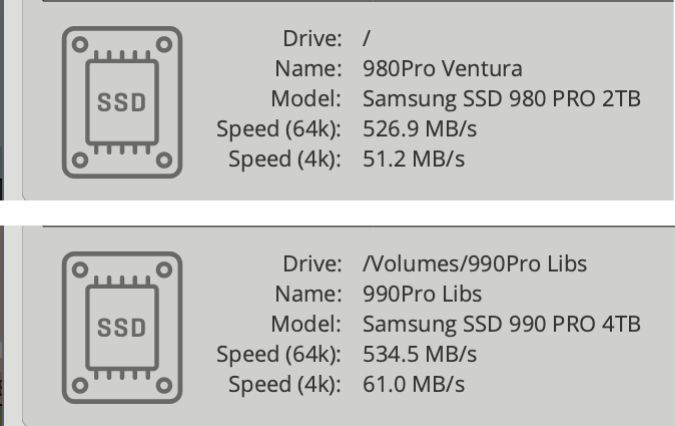[Edit]
Well I'm now settled into my computing equipment 'bunker'.
With merely the addition of a couple of new and fast SSDs that can max-out both of my Thunderbolt 3 ports as well as provide substantial random-access read speed, I'm now prepared to bide my time for a while. Maybe it'll be a long while.
I can't go beyond macOS Ventura on this machine because Apple, in their cultish way, try to ... erm ... 'dissuade' users from thinking of Macs more than 5 years old as anything other than obsolete. "Obsolete" used to mean "falling into disuse" in a natural way. Nowadays however, we see more and more examples of products being pushed into disuse by their parent corporations.
Hence my current stubborn bunker attitide, carrying on regardless with my dear old iMac.
As a minimum requirement for a new computer I want many more CPU cores - at least 16, as Stephen now has in his superb new M3 Max MBP. Maybe in this or the next Autumn, Apple will release a Mac Mini or Studio with a 16 core plus 128 GB Ram M3-Max option, or perhaps drop the price of the Ultra 24 core option. In my book, currently the options for Mac Mini and Mac Studio are just nasty.
Don't get me started on that ridiculous toy that now masquerades under the once-proud name of iMac.
Also, Intel's recently announced Thunderbolt 5 would be a very useful new feature in all Macs, most especially for us sample-library users. But who knows how long before that will happen - given that Intel and Apple aren't exactly best friends now.
And anything less than a 27" Retina screen is simply not a choice I'd make willingly.
Hey ho, on we go.
